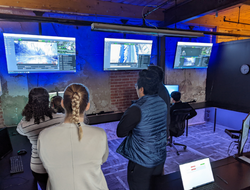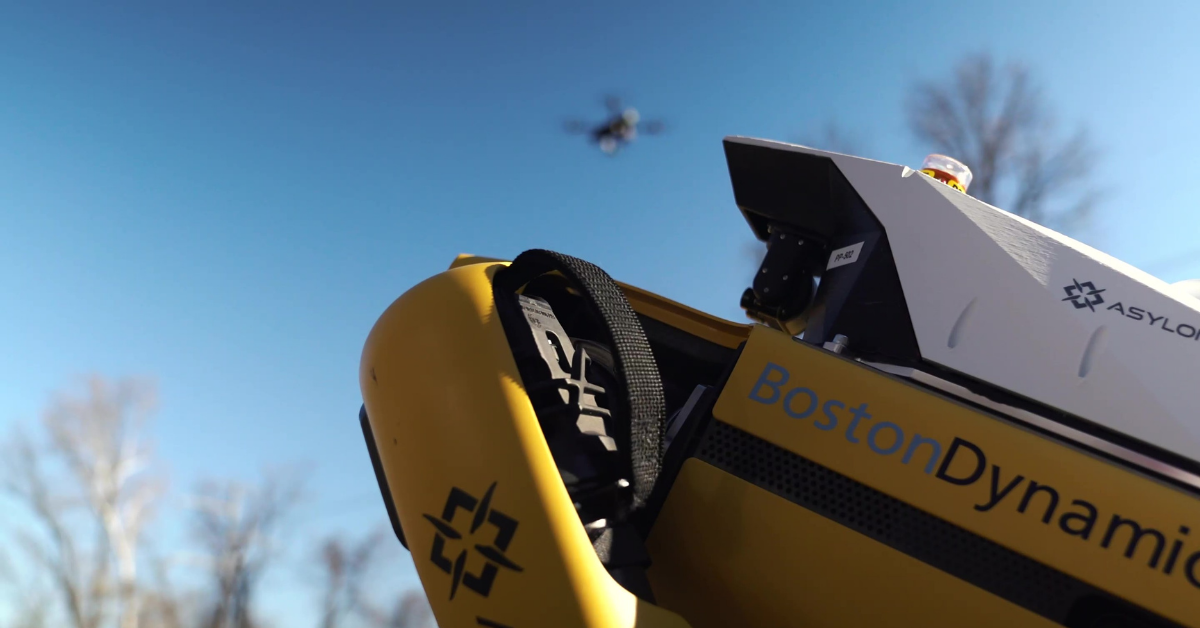Autonomous perimeter security systems for base defense personnel are a hot topic in the Department of Defense (DoD). But to the laymen, what does it mean? There are a lot of different terms involved that can be confusing. Additionally, problem design can span a considerable distance based on terrain, geographic area, and specific mission sets of bases. However, several factors are the same in all scenarios: one primary factor is that teams are evaluated by operational KPIs. I outline these factors below, but for context on why this problem set matters, here’s a recent problem solicitation published by the Defense Innovation Unit (DIU) for the DoD:
“DoD installations expend significant resources on securing and monitoring installation perimeters and waterways for surface and subsurface threats. Threat mitigation and response consists of roving vehicles, surface vessels, and camera feeds to monitor activity in key areas. Current systems are manpower-intensive and employ low-density assets (security vehicles) that are costly to maintain.“
Automation vs. autonomous

But first, Let’s define some key terms in this context:
- Automation – the use of largely automatic equipment in a manufacturing or system process.
- Autonomous – denoting a device capable of operating without direct human control.
Though used interchangeably, there’s a massive operational step-change between Automation and Autonomous. The difference? Human involvement.
Automation-focused systems use technology to reduce the need for a human operator to be in the loop at certain points.
Autonomous systems remove humans entirely from the loop. Though, they have the capability of escalating an issue to a human as needed, typically based on a series of pre-defined rules.
The reality for most programs is that humans will always be in the loop. The question is a matter of to what extent. This is where policy, TTPs, and SOPs are critical.
Evaluating autonomous security systems for base defense environments
In a base defense scenario, creating processes like dispatching or patrolling areas with autonomous systems can be done in a way that can drive security KPIs for customers. Humans make decisions where certain levels of authority and responsibility can not be delegated, for instance, command authority level decisions. Autonomous systems can assist in decision-making by identifying, organizing, prioritizing, and communicating data to decision-makers to reduce time and, ultimately, operational risk.
Throughout many customer implementations, Asylon has identified three areas that are obvious to both internal and external stakeholders when evaluating the state of a site security program. Let’s take a look at these factors below and compare how they can change after implementing autonomous perimeter security systems.
Signs of old processes:
- Resource Wastage – Using disproportionate resources to achieve surveillance in remote areas.
- E.g.., permits and construction costs related to trenching power cables to set up CCTVs in remote areas.
- Human Resource Constraint – Dispatching human resources to identify security breaches in scenarios where teams are understaffed.
- E.g., dispatching personnel in patrol cars to validate alarm data that may or may not be accurate.
- False Alarm Neglect – Where security teams expend little to no resources identifying false alarms, adversarial parties can develop a pattern of life around these instances to breach perimeters.
- E.g., a scenario where base defense operations centers (BDOC) no longer investigate false alarms due to a developed perception of alarm accuracy over time. Couple this with “overstimulation,” and teams can, over time, minimize the priorities of alarm response.

Why autonomous systems are vital for modernization efforts
Autonomous Perimeter Security systems can help teams tackle these problems consistently and cost-effectively, all while reducing risk. We will outline ways they can tackle the three previously mentioned areas below:
- Resource Wastage – Using robotic sentries or leveraging existing alarm signatures to develop situational awareness of remote area behaviors.
- Human Resource Constraint – Dispatching human teams into dangerous or unknown situations after developing situational awareness needed to reduce operational risk.
- False Alarm Neglect – Using robotic sentries or predictive maintenance analysis to clear false alarms and automatically develop work orders to repair faulty equipment based on performance analytics.
These are just some of the ways that teams can leverage autonomous perimeter security to reduce resource usage and answer the problem set in a way that meets the current need and proactively solves future issues. By leveraging autonomous systems, the system as a whole develops a profile of the area over time. As contemporaneous data collected deviates from the mean of the profile, autonomous systems can uniquely provide security for the data needed to make truly intelligent decisions derived from this blended approach.
Regardless of the problem specifications, autonomous perimeter security systems can be designed around operational KPIs (resources, HR, false alarm rates, etc.) to do two main things: reduce risk and increase safety.
A robotic security case study

In California, a logistics depot experienced an inordinate amount of product loss due to theft. A 3PL company ran the facility in charge of shipping client organization material across the continental U.S. In addition to product loss, employees at the facility gave the facility a low confidence rating due to security and thefts in the company parking lot. Upon implementation of Asylon autonomous perimeter security systems, Asylon was able to drive the following KPIs:
- End-user confidence in physical security program rose from 3/10 to 8/10.
- 819 security alarms responded to and cleared remotely.
- 385% YoY mission count increase.
- According to Crime Data (a public law enforcement database), crime index at Site #1 dropped from 19 to 16.6 (13% reduction) from August 2020 to August 2021.
- A noticeable reduction in car break-ins in the employee parking lot.
The full case study can be found here.
Learning more about autonomous security systems for base defense
- Do you want to understand how an Autonomous Perimeter Security program can help your organization?
- Would you like to learn more about all of the different aspects involved in implementing an Autonomous Perimeter Security program?
- Do you have KPIs outside of those mentioned above and want to know how Asylon could design an Autonomous Perimeter Security program around them?
Reach out to Asylon at uibrahim@asylonrobotics.com to learn how our organization can implement autonomous perimeter security design at your installation.
Asylon Robotics is a validated dual-use company helping teams across industry and defense to reduce security incidents and operational risk to drive better security outcomes.

